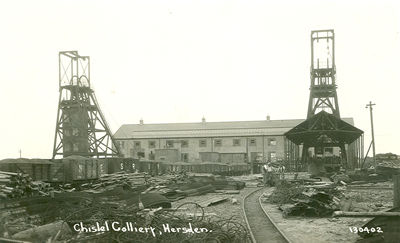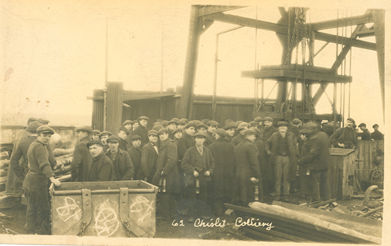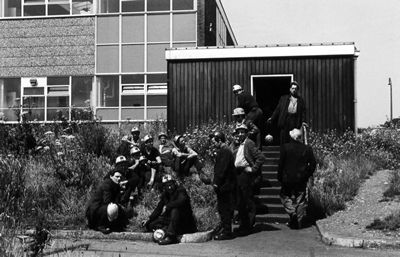Chislet Colliery

The discovery of coal in Kent and the subsequent opening of the Kent coalfields generated interest abroad, including interest from German industrialists. The German industrialists decided to explore the Canterbury area and in 1911 the Anglo-Westphalian Coal Syndicates Ltd was set up to lease land near Chislet.
The German company sank bore holes at six sites: Rushbourne, Hoades Wood in Sturry, Herne Bay, Reculver, Chitty and Chislet Park. They originally thought that by opening up the Sarre Penn stream the Kent coal could be transferred by barge to the sea and the Wantsum Channel, but the company failed to get permission to open up the stream. Sinking was then moved to land near Westbere Court which could provide transport via the road to the north side and via the railway to the South.
Work started there in May 1914 but the borings found the ground to be chalk which held large pockets of water. In order to plough through the chalk, the Company used the “cementation “ process whereby cement was injected under high pressure into the chalk and fissures to consolidate the ground. They reached coal at 1350ft (411 metres) in 1919.

Chislet Colliery c. 1955

Thomas Heckley, Chislet Miner
Heckley in 1946.
After sixty-one years underground in various pits, Heckley semiretired at age 73. He is pictured here at age 74 after moving to working overground on the screenings at Chislet.
The First World War broke out in 1914, following which the company was reorganised as the North Kent Coalfield Ltd after the German interests were removed. The Company later changed its name to Chislet Colliery Ltd. Sinking resumed in 1915 but, due to difficult conditions, progress was slow.
For five years saleable quantities of coal were being produced, but a succession of strikes in the 1920s caused damage to the underground roadways. Due to this damage and due to the lack of repairs, some of the railways were closed up and others were abandoned. The coalfaces which were idle eventually collapsed and had to be reopened.
In 1929, when the Company was in serious financial difficulties, they appointed Mr E O Forster Brown, a leading mining engineer, to reorganise the running of the Colliery. The Company also appointed a Mr Charles Clark to improve labour relations. Output increased and the fortunes of the Company improved and thus funds became available to improve the social life of the colliers.
Many Chislet miners were Welsh, Welsh colliery companies held shares in the Chislet Company and they had developed a close working relationship. Until 1924 the majority of the Chislet miners lived in Ramsgate. In 1924, the Chislet Colliery Housing Society was formed to build a small colliery village of 300 houses at Chislet. This village was later renamed Hersden in order to distinguish it from the original village of Chislet up the road.

View of the Colliery from the East 1930’s.
After Nationalisation in 1947 the colliery was extensively modernised. Unfortunately for Kent, the end of steam trains in 1968 took away most of the colliery's market. The colliery eventually closed in 1969 and the 1550 men who had worked there transferred to the other three Kent pits.

Pit top, C1932

Men outside the bath house, last shift, 1969
The colliery was demolished and a small industrial estate now occupies part of the site. Located on the marshes of the River Stour, the colliery waste tip is now a nature reserve.